Creating Q*Bert and Other Classic Video Arcade Games
 Santa Monica Press publishes Warren Davis’ career memoir, “Creating Q*Bert and Other Classic Video Arcade Games“. Davis recalls his work on such ’80s and ’90s arcade games as Q*Bert, Exterminator, Terminator 2, and Revolution X, as well as numerous games and game concepts that never saw the light of day.
Santa Monica Press publishes Warren Davis’ career memoir, “Creating Q*Bert and Other Classic Video Arcade Games“. Davis recalls his work on such ’80s and ’90s arcade games as Q*Bert, Exterminator, Terminator 2, and Revolution X, as well as numerous games and game concepts that never saw the light of day.
Break Out: How The Apple II Launched The PC Gaming Revolution
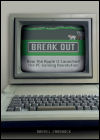 Schiffer publishes David L. Craddock’s non-fictional collection of essays on the stories and creators behind Apple II computer games, “Break Out: How The Apple II Launched The PC Gaming Revolution “. The book profiles the creators and the stories behind such popular titles as Ultima, The Oregon Trail, Pinball Construction Set, Wizardry, Zork, Lode Runner, and more.
Schiffer publishes David L. Craddock’s non-fictional collection of essays on the stories and creators behind Apple II computer games, “Break Out: How The Apple II Launched The PC Gaming Revolution “. The book profiles the creators and the stories behind such popular titles as Ultima, The Oregon Trail, Pinball Construction Set, Wizardry, Zork, Lode Runner, and more.
Masaya Nakamura, Namco founder, dies
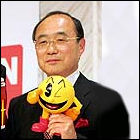 Masaya Nakamura, the founder of pioneering Japanese video game maker Namco, dies at the age of 91. Founded in 1955 as Nakamura Manufacturing Co., Namco was an early proponent of video game development in Japan, though it saw its earliest successes as the Japanese distributor of Atari arcade games imported from the U.S. After moderately successful early coin-ops such as Gee Bee, Namco quickly established itself as a global powerhouse with the release of such perennial classics as Pac-Man, Galaxian, Galaga, Dig Dug, Pole Position, and Xevious, among many others. Namco’s growth in the 1980s was so explosive that it absorbed Japanese film studio Nikkatsu in 1993 (several of whose titles Nakamura oversaw as executive producer), and later merged with Bandai in 2005.
Masaya Nakamura, the founder of pioneering Japanese video game maker Namco, dies at the age of 91. Founded in 1955 as Nakamura Manufacturing Co., Namco was an early proponent of video game development in Japan, though it saw its earliest successes as the Japanese distributor of Atari arcade games imported from the U.S. After moderately successful early coin-ops such as Gee Bee, Namco quickly established itself as a global powerhouse with the release of such perennial classics as Pac-Man, Galaxian, Galaga, Dig Dug, Pole Position, and Xevious, among many others. Namco’s growth in the 1980s was so explosive that it absorbed Japanese film studio Nikkatsu in 1993 (several of whose titles Nakamura oversaw as executive producer), and later merged with Bandai in 2005.
Satoru Iwata, Nintendo CEO, dies
 Nintendo of Japan CEO Satoru Iwata dies as a result of complications from gall bladder surgery. As the head of game developer HAL Laboratories, Iwata oversaw games in the Kirby, Super Smash Bros. and Pokemon series, until he replaced outgoing Nintendo CEO Hiroshi Yamauchi in 2002. His tenure saw the introduction of the Nintendo DS handheld, the Wii console, and the wildly popular Amiibo figurines, as well as unprecedented interaction with fans and customers on the internet.
Nintendo of Japan CEO Satoru Iwata dies as a result of complications from gall bladder surgery. As the head of game developer HAL Laboratories, Iwata oversaw games in the Kirby, Super Smash Bros. and Pokemon series, until he replaced outgoing Nintendo CEO Hiroshi Yamauchi in 2002. His tenure saw the introduction of the Nintendo DS handheld, the Wii console, and the wildly popular Amiibo figurines, as well as unprecedented interaction with fans and customers on the internet.
Douglas E. Smith, Lode Runner creator, dies
 The creator and programmer of Lode Runner, Douglas E. Smith, dies at the age of 53. A spare-time creation that became an all-consuming passion for Smith, Lode Runner sparked a nearly unprecedented bidding war among major computer game publishers in 1983. At the time of Smith’s death, Lode Runner has been ported to most major game and computer systems over the past 31 years.
The creator and programmer of Lode Runner, Douglas E. Smith, dies at the age of 53. A spare-time creation that became an all-consuming passion for Smith, Lode Runner sparked a nearly unprecedented bidding war among major computer game publishers in 1983. At the time of Smith’s death, Lode Runner has been ported to most major game and computer systems over the past 31 years.
Hiroshi Yamauchi, Nintendo president, dies
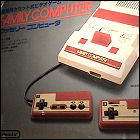 The president of Nintendo through the latter half of the 20th century, Hiroshi Yamauchi, dies at the age of 85. Having dropped out of college to assume control of Nintendo from his ailiing grandfather in 1949, Yamauchi transformed the company from a maker of playing cards into a power player in the electronic game market, even though Nintendo’s first video game product was a licensed version of the American-made Magnavox Odyssey. Twice, Yamauchi boldly decided to break into the American video game market with no guarantee of success: once with the arcade game Donkey Kong, and again with the launch of the Nintendo Entertainment System, even after a Stateside licensing deal with Atari fell through at the last minute, depriving the NES of Atari’s existing marketing and distribution channels.
The president of Nintendo through the latter half of the 20th century, Hiroshi Yamauchi, dies at the age of 85. Having dropped out of college to assume control of Nintendo from his ailiing grandfather in 1949, Yamauchi transformed the company from a maker of playing cards into a power player in the electronic game market, even though Nintendo’s first video game product was a licensed version of the American-made Magnavox Odyssey. Twice, Yamauchi boldly decided to break into the American video game market with no guarantee of success: once with the arcade game Donkey Kong, and again with the launch of the Nintendo Entertainment System, even after a Stateside licensing deal with Atari fell through at the last minute, depriving the NES of Atari’s existing marketing and distribution channels.
Hubble spots a Space Invader
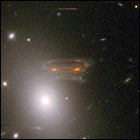 To allay public fears that the next level might not be reached, NASA offers an explanation for an enigmatic 2010 image from the Hubble Space Telescope, showing a galaxy cluster, Abell 68, approximately 2,000,000,000 light years away. In the middle of that cluster, however, is what appears to be an alien from the video game Space Invaders. NASA explains that it’s a visual artifact of gravitational lensing caused by the gravity influence of the foreground galaxies upon the light of galaxies further away in the image. Earth breathes easy once more.
To allay public fears that the next level might not be reached, NASA offers an explanation for an enigmatic 2010 image from the Hubble Space Telescope, showing a galaxy cluster, Abell 68, approximately 2,000,000,000 light years away. In the middle of that cluster, however, is what appears to be an alien from the video game Space Invaders. NASA explains that it’s a visual artifact of gravitational lensing caused by the gravity influence of the foreground galaxies upon the light of galaxies further away in the image. Earth breathes easy once more.
Atari files for bankruptcy
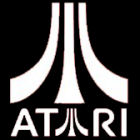 The 21st century iteration of Atari, now owned by the French video game company formerly known as Infogrames, files for Chapter 11 bankruptcy protection as it tries to disentangle itself from its parent company’s descent into insolvency. Revealed in the filing is that, despite numerous modern games distributed under the Atari “label”, licensing of the 1970s Atari logo accounts for almost one-fifth of Atari’s current revenue. The classic Atari game portfolio dating back to such games as Pong and Asteroids is put up for sale in an effort to raise funds for the troubled company.
The 21st century iteration of Atari, now owned by the French video game company formerly known as Infogrames, files for Chapter 11 bankruptcy protection as it tries to disentangle itself from its parent company’s descent into insolvency. Revealed in the filing is that, despite numerous modern games distributed under the Atari “label”, licensing of the 1970s Atari logo accounts for almost one-fifth of Atari’s current revenue. The classic Atari game portfolio dating back to such games as Pong and Asteroids is put up for sale in an effort to raise funds for the troubled company.
Project Yellow Sphere
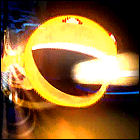 The enigmatically titled internet short film Project Yellow Sphere debuts, revealed to be a semi-serious, six-minute live-action-plus-CGI proof-of-concept trailer for a potential Pac-Man movie. Shot and produced entirely at commercial production house Steelehouse Productions in Tulsa, Oklahoma, it’s the closest anyone has gotten to mounting a long-talked about Pac-Man film.
The enigmatically titled internet short film Project Yellow Sphere debuts, revealed to be a semi-serious, six-minute live-action-plus-CGI proof-of-concept trailer for a potential Pac-Man movie. Shot and produced entirely at commercial production house Steelehouse Productions in Tulsa, Oklahoma, it’s the closest anyone has gotten to mounting a long-talked about Pac-Man film.
More about Project Yellow Sphere in the LogBook
Hear about it on the Sci-Fi 5 podcast
White House honors Odyssey inventor
 Ralph Baer, the inventor of home video games, receives the National Medal of Technology from President George W. Bush. While working for defense contractor Sanders & Associates in the 1960s, Baer pioneered the concept of interactive television programming, eventually gathering a hand-picked team to create a prototype called the Brown Box. Baer and his employer licensed the technology to Magnavox, which repackaged it and marketed it as the world’s first home video game console, the Odyssey. Baer also created other key video game innovations, such as the first light gun.
Ralph Baer, the inventor of home video games, receives the National Medal of Technology from President George W. Bush. While working for defense contractor Sanders & Associates in the 1960s, Baer pioneered the concept of interactive television programming, eventually gathering a hand-picked team to create a prototype called the Brown Box. Baer and his employer licensed the technology to Magnavox, which repackaged it and marketed it as the world’s first home video game console, the Odyssey. Baer also created other key video game innovations, such as the first light gun.
Supercade
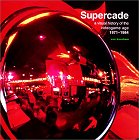 MIT Press publishes Van Burnham’s non-fictional history of the video game industry and its products, “Supercade“. Covering developments from Spacewar! and the Magnavox Odyssey through the Playstation era, “Supercade” is a coffee table book lavishly illustrated with emulator screen shots (and some surprisingly low-resolution digital photos and scans) and numerous essays by various authors on arcade and console games of note.
MIT Press publishes Van Burnham’s non-fictional history of the video game industry and its products, “Supercade“. Covering developments from Spacewar! and the Magnavox Odyssey through the Playstation era, “Supercade” is a coffee table book lavishly illustrated with emulator screen shots (and some surprisingly low-resolution digital photos and scans) and numerous essays by various authors on arcade and console games of note.
Mario Kart: Super Circuit
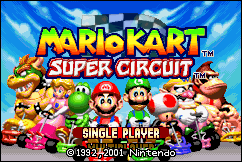 Nintendo releases Mario Kart: Super Circuit for the Game Boy Advance in North America (the game had already been released in Japan a month earlier. The game is essentially a Game Boy Advance port of the smash hit SNES game Super Mario Kart.
Nintendo releases Mario Kart: Super Circuit for the Game Boy Advance in North America (the game had already been released in Japan a month earlier. The game is essentially a Game Boy Advance port of the smash hit SNES game Super Mario Kart.
More about Mario Kart: Super Circuit in Phosphor Dot Fossils
Arcade Fever
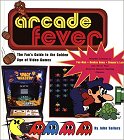 Running Press publishes John Sellers’ non-fictional recap of the video game industry’s early landmark titles, “Arcade Fever” (initially announced as “Arcade Planet”). Focusing almost entirely on coin-op games from the 1970s and 1980s, and illustrated with emulator screen shots and game cabinet artwork, the book is subtitled “The Fan’s Guide to the Golden Age of Video Games”. Its irreverent tone is less scholarly than some of the other books on the same topic published around this time.
Running Press publishes John Sellers’ non-fictional recap of the video game industry’s early landmark titles, “Arcade Fever” (initially announced as “Arcade Planet”). Focusing almost entirely on coin-op games from the 1970s and 1980s, and illustrated with emulator screen shots and game cabinet artwork, the book is subtitled “The Fan’s Guide to the Golden Age of Video Games”. Its irreverent tone is less scholarly than some of the other books on the same topic published around this time.
Crazy Climber 2000
 Nichibutsu, originators of the 1980 arcade game Crazy Climber, releases the 3-D sequel/remake Crazy Climber 2000 for the Sony Playstation in Japan only. Though this is not the first PS1 Crazy Climber game, it is the first to allow players to use both the D-pad and the four action buttons as two D-pads, mimicking the two-joystick control scheme of the original arcade game.
Nichibutsu, originators of the 1980 arcade game Crazy Climber, releases the 3-D sequel/remake Crazy Climber 2000 for the Sony Playstation in Japan only. Though this is not the first PS1 Crazy Climber game, it is the first to allow players to use both the D-pad and the four action buttons as two D-pads, mimicking the two-joystick control scheme of the original arcade game.
More about Playstation in Phosphor Dot Fossils
Joystick Nation
 Little & Brown publishes J.C. Herz’s non-fictional analysis of the video game industry, “Joystick Nation“. The books is a series of essays on the origins, appeal, marketing and interpretation of video games, often from an academic and sociological perspective. A TV documentary project based on the book is announced at a later date, but never enters production.
Little & Brown publishes J.C. Herz’s non-fictional analysis of the video game industry, “Joystick Nation“. The books is a series of essays on the origins, appeal, marketing and interpretation of video games, often from an academic and sociological perspective. A TV documentary project based on the book is announced at a later date, but never enters production.
Multiple Arcade Machine Emulator
 Programmer Nicola Salmoria releases the earliest version of the Multiple Arcade Machine Emulator, or MAME, a freeware PC program which allows users to obtain dumps of the original 1970s and 1980s arcade game ROM chips which MAME interprets, emulating the original hardware architecture to allow play of those games with remarkable fidelity to the original graphics and sounds. This kick-starts a golden age of computer emulation of classic video games and game systems, with the average desktop computer now sporting enough memory to allow for accurate emulation. The release of MAME also ignites an ongoing controversy about the legality of downloading games whose original manufacturers are no longer exploting their intellectual property (or, in some cases, no longer exist as corporate entities).
Programmer Nicola Salmoria releases the earliest version of the Multiple Arcade Machine Emulator, or MAME, a freeware PC program which allows users to obtain dumps of the original 1970s and 1980s arcade game ROM chips which MAME interprets, emulating the original hardware architecture to allow play of those games with remarkable fidelity to the original graphics and sounds. This kick-starts a golden age of computer emulation of classic video games and game systems, with the average desktop computer now sporting enough memory to allow for accurate emulation. The release of MAME also ignites an ongoing controversy about the legality of downloading games whose original manufacturers are no longer exploting their intellectual property (or, in some cases, no longer exist as corporate entities).
More about arcade games in Phosphor Dot Fossils
Nintendo, Sony part ways over peripheral
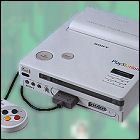 After three years of joint development on a CD-ROM peripheral for Nintendo’s new video game system, Sony and Nintendo part ways, leaving the public and the press confused over what will happen next. Hours after Nintendo unveils the specs and price point for its Super Nintendo Entertainment System to the press, Sony announces that it will release a new system called the Play Station in 1992, which will play both SNES cartridges and disc-based systems made by Sony. Of course, Sony’s development curve isn’t that simple, and the first Sony video game system won’t arrive until a few years – and a whole generation of computer game hardware – later.
After three years of joint development on a CD-ROM peripheral for Nintendo’s new video game system, Sony and Nintendo part ways, leaving the public and the press confused over what will happen next. Hours after Nintendo unveils the specs and price point for its Super Nintendo Entertainment System to the press, Sony announces that it will release a new system called the Play Station in 1992, which will play both SNES cartridges and disc-based systems made by Sony. Of course, Sony’s development curve isn’t that simple, and the first Sony video game system won’t arrive until a few years – and a whole generation of computer game hardware – later.
More about Playstation in Phosphor Dot Fossils
Ninja Golf
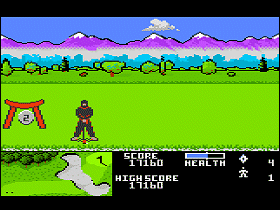 One of Atari’s most innovative games of the 1990s is released for the Atari 7800 home video game system. Ninja Golf is a game parodying both the glut of current sports simulations and martial arts fighting games – at the same time. Players take a swing at the ball, and then a swing at their throwing-star-hurling enemies. Despite its cheeky humor and innovative play, Ninja Golf doesn’t make much noise at retail – it’s stealthy, like a ninja.
One of Atari’s most innovative games of the 1990s is released for the Atari 7800 home video game system. Ninja Golf is a game parodying both the glut of current sports simulations and martial arts fighting games – at the same time. Players take a swing at the ball, and then a swing at their throwing-star-hurling enemies. Despite its cheeky humor and innovative play, Ninja Golf doesn’t make much noise at retail – it’s stealthy, like a ninja.
Dr. Mario
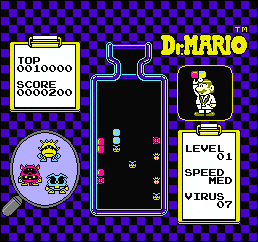 Nintendo releases the Dr. Mario cartridge for the Nintendo Entertainment System, giving everyone’s favorite Mushroom Kingdom plumper a medical degree and pitting him against viruses and germs, Tetris-style.
Nintendo releases the Dr. Mario cartridge for the Nintendo Entertainment System, giving everyone’s favorite Mushroom Kingdom plumper a medical degree and pitting him against viruses and germs, Tetris-style.
Nintendo Game Boy
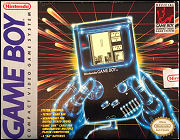 Nintendo launches a portable video game system with interchangeably cartrdiges, the Game Boy, in North America. Though many industry insiders predict a short life for the handheld game thanks to its ability to quickly drain its batteries and its black & white LCD display, the game included with each Game Boy – the incredibly popular puzzle game Tetris – becomes a selling point in itself. With a price tag of around $100, the entire million-unit allotment of Game Boys shipped to American stores sells out in under two months.
Nintendo launches a portable video game system with interchangeably cartrdiges, the Game Boy, in North America. Though many industry insiders predict a short life for the handheld game thanks to its ability to quickly drain its batteries and its black & white LCD display, the game included with each Game Boy – the incredibly popular puzzle game Tetris – becomes a selling point in itself. With a price tag of around $100, the entire million-unit allotment of Game Boys shipped to American stores sells out in under two months.
Game over for Coleco
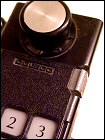 Having weathered the storm of the 1983 video game industry crash longer than most, Coleco Industries, maker of the early ’80s Colecovision video game system, files for Chapter 11 bankruptcy protection. At the time of the filing, Coleco is America’s sixth largest toy company, but the video game industry isn’t its downfall. Overproduction of the company’s Cabbage Patch Kids toys has proven to be fatal, with two straight years of annual losses exceeding $100,000,000. The remains of Coleco are eventually bought up by rival toymaker Hasbro.
Having weathered the storm of the 1983 video game industry crash longer than most, Coleco Industries, maker of the early ’80s Colecovision video game system, files for Chapter 11 bankruptcy protection. At the time of the filing, Coleco is America’s sixth largest toy company, but the video game industry isn’t its downfall. Overproduction of the company’s Cabbage Patch Kids toys has proven to be fatal, with two straight years of annual losses exceeding $100,000,000. The remains of Coleco are eventually bought up by rival toymaker Hasbro.
The Legend Of Zelda
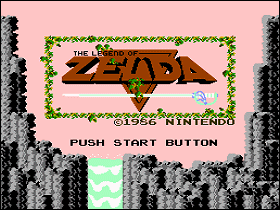 Nintendo releases The Legend Of Zelda for the Nintendo Entertainment System in North America, having already released a version early in 1986 in Japan. Rolled out with a major advertising campaign, Zelda revitalizes and redefines the video adventure game genre, as well as players’ expectation of electronically-moderated role-playing games, and spawns one of Nintendo’s most profitable major tentpole franchises.
Nintendo releases The Legend Of Zelda for the Nintendo Entertainment System in North America, having already released a version early in 1986 in Japan. Rolled out with a major advertising campaign, Zelda revitalizes and redefines the video adventure game genre, as well as players’ expectation of electronically-moderated role-playing games, and spawns one of Nintendo’s most profitable major tentpole franchises.
Donkey Kong 3
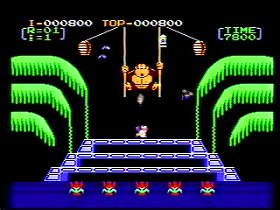 Nintendo releases the Donkey Kong 3 cartridge for the Nintendo Entertainment System, based on the company’s own 1983 arcade game.
Nintendo releases the Donkey Kong 3 cartridge for the Nintendo Entertainment System, based on the company’s own 1983 arcade game.
Wrecking Crew
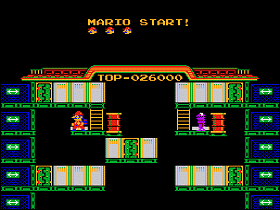 Nintendo releases Wrecking Crew for the Nintendo Entertainment System. Possibly the most obscure NES game to feature Mario, this is one of very few Mario games to continue the idea – established in Donkey Kong – that Mario is a construction worker rather than a plumber with super powers.
Nintendo releases Wrecking Crew for the Nintendo Entertainment System. Possibly the most obscure NES game to feature Mario, this is one of very few Mario games to continue the idea – established in Donkey Kong – that Mario is a construction worker rather than a plumber with super powers.
The Oregon Trail reborn
 The Minnesota Educational Computing Corporation releases a new version of the perennial favorite educational computer game The Oregon Trail for the Apple II computer. Now featuring more action-based sequences than purely textual interactions, this version of The Oregon Trail is the most recognizable iteration of the game, which will be ported to numerous other computer systems.
The Minnesota Educational Computing Corporation releases a new version of the perennial favorite educational computer game The Oregon Trail for the Apple II computer. Now featuring more action-based sequences than purely textual interactions, this version of The Oregon Trail is the most recognizable iteration of the game, which will be ported to numerous other computer systems.
Rush’n Attack
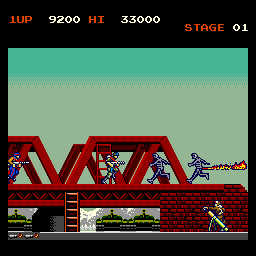 Konami introduces the arcade game Rush’n Attack in the United States, while the same game – with no changes to its hand-to-hand military fighting action – is released elsewhere as Green Beret.
Konami introduces the arcade game Rush’n Attack in the United States, while the same game – with no changes to its hand-to-hand military fighting action – is released elsewhere as Green Beret.
Indiana Jones and the Arcade of Doom
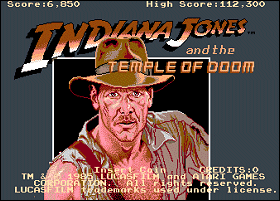 Atari releases the arcade game Indiana Jones and the Temple of Doom in the United States, giving players the chance to hate pixellated snakes from a safe distance.
Atari releases the arcade game Indiana Jones and the Temple of Doom in the United States, giving players the chance to hate pixellated snakes from a safe distance.
More about Indiana Jones and the Temple of Doom in Phosphor Dot Fossils
Coleco shuts down video game division
 Coleco Industries formally announces the complete discontinuation of its Adam computer and the Colecovision home video game console, after revealing a $55,000,000 loss for 1984, a loss incurred largely by the market failure of Adam; only the hugely popular Cabbage Patch Kids dolls, another Coleco product, keep the company from losing any more money. Coleco’s remaining game and computer stock is sold to closeout retail chain Odd Lot, and the video game market crash claims another victim.
Coleco Industries formally announces the complete discontinuation of its Adam computer and the Colecovision home video game console, after revealing a $55,000,000 loss for 1984, a loss incurred largely by the market failure of Adam; only the hugely popular Cabbage Patch Kids dolls, another Coleco product, keep the company from losing any more money. Coleco’s remaining game and computer stock is sold to closeout retail chain Odd Lot, and the video game market crash claims another victim.
Ghostbusters
 Just in time for Halloween, Activision releases the Ghostbusters cartridge for the Atari 2600 home video game system, based on the hit movie of the same name.
Just in time for Halloween, Activision releases the Ghostbusters cartridge for the Atari 2600 home video game system, based on the hit movie of the same name.
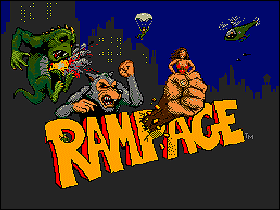 Midway Games releases the arcade game
Midway Games releases the arcade game